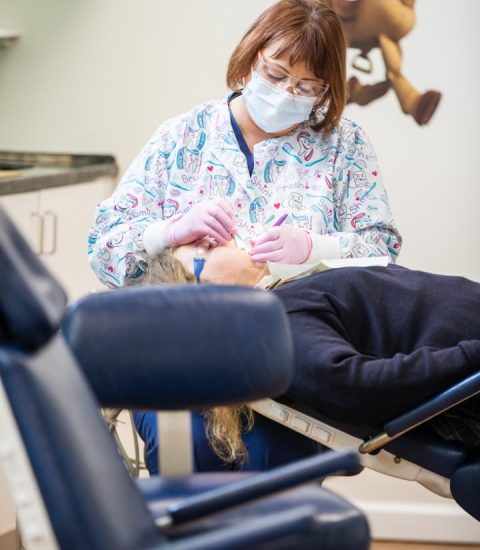Frenectomy
Frenectomy for Tongue-Tie in Luzerne County, PA
What are tongue and lip-ties?
Tongue-ties and lip-ties are relatively common conditions. Early in life, the tongue and lips are anchored to the palate by a piece of tissue called the frenulum. Lip-tie or tongue-tie occurs when this tissue is too short or tight, which can result in restricted movement of the tongue or lips. This can interfere with a baby’s ability to latch on to the nipple, making breastfeeding difficult. A lactation consultant can provide support before and after a frenectomy.
Tongue-tie and lip-tie are usually diagnosed soon after birth. Some parents choose a wait-and-see approach to see if it will resolve on its own. However, a simple procedure can be performed in other cases to release the frenulum and improve breastfeeding function.
What is a frenectomy?
A frenectomy is a surgical procedure to remove a frenum, a small fold of tissue connecting the lips or tongue to the gum. There are two types of frenectomy: maxillary and lingual.
Maxillary Frenectomy
This procedure resolves an upper lip tie by removing the labial frenum, a fibrous band of tissue that attaches the upper lips to the gums of the upper teeth. A frenectomy is often performed when the labial frenum is too large or extends too far into the gum, which can cause problems with chewing or speaking. In some cases, this procedure may also be done to improve the appearance of the upper lip.
Lingual Frenectomy
This procedure, also called a tongue-tie release, removes a small strip of tissue (the lingual frenulum) attaching the tongue to the floor of the mouth. This may be recommended if an infant has difficulty breast or bottle feeding due to a restricted range of tongue motion.

Issues Corrected by a Frenectomy
Several issues can result from lip-tie or tongue-tie. A frenectomy can help correct the following problems:
- Breastfeeding issues: A frenectomy can assist an infant in achieving the correct oral and tongue posture, allowing for easier feeding without pain. Lactation consultants will often recommend frenectomy for infants who need help feeding.
- Eating issues: After frenectomies, children can typically feed themselves easier.
- Breathing/airway issues: Tongue-tie may assume a dropped posture that can influence lower jaw development and growth. This can lead to smaller airways more likely to collapse during sleep.
- Speech issues: Correcting tongue-tie or lip-tie makes speech simpler and more natural for children.
How a Frenectomy is Performed
In most cases, a frenectomy procedure can be performed using local anesthesia and requires no stitches. First, the area around the frenulum will be numbed with injections. Next, the frenulum will be cut with a scalpel or laser. After the procedure, gauze may be placed over the area to help stop bleeding. Patients often leave the office and resume their normal activities within a few hours.


What to Expect Following Surgery
After the procedure, you can expect swelling and discomfort in the affected area. Your doctor will provide you with pain medication to help manage this. You should also expect some bleeding and bruising, which is normal. It is essential to follow your doctor’s instructions for care after your surgery, which will likely involve keeping the area clean and dry and avoiding strenuous activity. In most cases, patients recover quickly and experience no long-term complications following a frenectomy.
Schedule a consultation with us!
Casey Dental is proud to provide the highest quality dental care possible. We are also experts in resolving tongue ties by performing a frenectomy. Call our office to set an appointment, and our team of specialists will work to resolve these issues, so your child grows healthy and strong!




